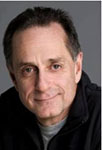Living Theatre
Monday, October 1, 2012This weekend I attended a Theatre For Living workshop with David Diamond, the Director of Vancouver’s Headlines Theatre, and Canada’s leading protagonist of a theatre form that evolved out of Augusto Boal’s Theatre of the Oppressed.
As Diamond explained in the workshop, his Theatre For Living was born out of the recognition that the traditional dichotomous split of ‘oppressor’ and ‘oppressed’ (or ‘us’ and ‘them’) fails to recognise that there are always two (if not more) sides to every story and that dialogue between the sides is only possible when desires and fears of both sides are acknowledged (but not necessarily legitimized).
Or, in Diamond’s own words, “When will we finally realise that there is no ‘them’?“.
The workshop, in which we explored the use of theatre exercises, games and techniques such as image theatre, ended with a three hour exercise in which we (the participants) created (and enacted) a Rainbow of Desire.
The entire event, incidentally was organised by my colleague Pamela Brett-MacLean , Director of the University of Alberta Faculty of Medicine and Dentistry’s Arts and Humanities in Health and Medicine Program, and took place in the Canadian Foundation for Innovation (CFI)-funded theatre research laboratory (a fully equipped theatre space), which, unbeknownst to me, happens to be located right across the street from my office.
What has any of this to do with obesity or my work?
Readers familiar with the work of Brazilian theatre director, writer and politician Augusto Boal’s Theatre of the Oppressed, a theatrical method based on Pedagogy of the Oppressed, a book by the Brazilian educator and writer Paulo Freire (who was also a good friend of Boal), will immediately see where my interest in exploring this language and art form to address the many issues relevant to obesity come from (and may lead to).
Those, who have never heard of ‘image’ or ‘forum’ theatre, and think that I should perhaps go back to coaxing cell cultures in my lab or tending to the patients in my clinic, may be in for a surprise.
I have no doubt that my recent venture into exploring the primal and universal language of theatre and how its vocabulary can be used to address the issues that I so deeply care about, will lead me down roads that are as new (and daunting) as any of the roads that I have ever turned into in my research or clinical work.
Prepare to see Sharma the ‘mutt’ take yet another turn off the beaten path (some readers will know exactly what I mean).
Stay tuned…
AMS
Edmonton, Alberta



